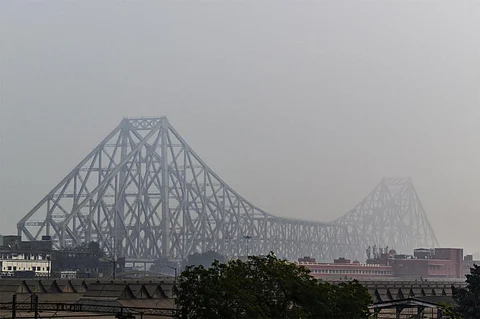

Winter pollution in the eastern states was the worst this time compared to the last three winters, according to a new report.
The average PM2.5 level from October 1, 2022 to February 28, 2023 across nine cities of east India with functional monitoring stations was 97 micrograms per cubic metre (µg/m³), according to the annual winter pollution report by Delhi-based non-profit Centre for Science and Environment. This is 6 per cent higher than the average of the previous three winters.
The daily peak of the season was recorded on January 1, 2023 and the daily regional average was 173 µg/m³, the data showed.
The peak was 24 per cent higher compared to the peak of the 2021-22 winter and 8 per cent higher than the mean peak of the previous three winters, according to the analysis.
Trends in winter PM2.5 levels in the cities of eastern states
The regional and daily peak averages for this winter were lower only than the 2019-2020 levels, when they were 102 and 186 respectively during the winter months, the report stated.
Bihar’s daily peak PM2.5 level this winter was 287 µg/m³ was the highest among the three states. West Bengal’s peak was 152 µg/m³ and Odisha’s 112 µg/m³.
The analysis covered 50 continuous ambient air quality monitoring stations (CAAQMS) spread across 32 cities in West Bengal, Odisha and Bihar. “Jharkhand has no working monitoring stations, and hence, offers no PM2.5 data for the last two years — which is why its cities have not been included in this analysis,” noted the authors of the report.
Bigger cities in the region like Patna and Kolkata that are part of the National Clean Air Programme (NCAP), have witnessed a marginal improvement in the winter average of their PM 2.5 levels compared to the previous two winters, but their levels are still high.
Bihar had the worst air quality in the region during these five months, according to the analysis. “The smaller towns of Bihar — Begusarai, Bettiah and Siwan in particular — have recorded the worst winter air in the region, with their seasonal average exceeding 200 µg/m³.”
Nitrogen dioxide (NO2) pollution is also high in the cities and towns of the region, with Arrah in Bihar recording a staggering 113 µg/m³ monthly average for November, noted CSE.
“In West Bengal, Asansol, with a winter average of 102 µg/m³ was the most polluted city; it is followed by Howrah (92 µg/m³) at the second spot,” the researchers wrote.
In Odisha, Talcher (75 µg/m³) was the most polluted. “However, since only two cities in the state have real time monitors with adequate data for assessment, it is not possible to capture the larger landscape,” wrote Avikal Somvanshi, senior programme manager, Urban Lab, CSE.
“This analysis is a stark reminder of the rapid spread of pollution. More cities and smaller towns are scaling the pollution height and dotting the pollution map,” said Anumita Roychowhdury, executive director, research and advocacy, CSE.
The experts called for a strong state-wide and regional management of air pollution to control local pollution sources including vehicles, industry, open burning and construction dust, as well as the impact of upwind pollution sources on downwind cities and towns.
Haldia in West Bengal was the least polluted city among the three states with a PM2.5 average of 46 µg/m³, followed by Siliguri in West Bengal and Manguraha in Bihar with winter averages of 60 µg/m³ and 66 µg/m³, respectively.